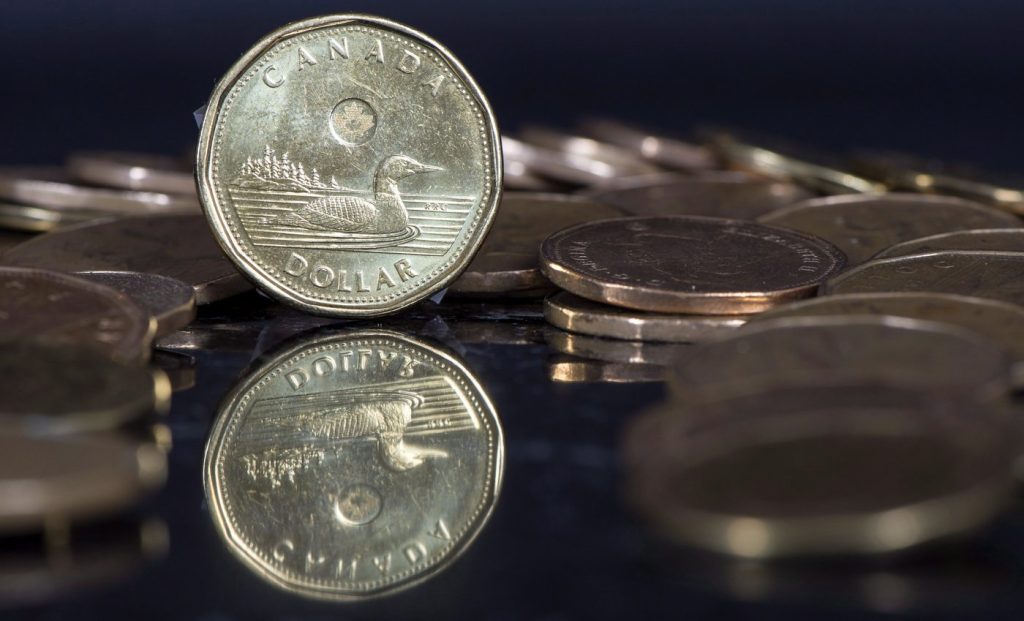Economists say more room to fall as Canadian dollar continues downward trend

Posted December 24, 2024 2:00 am.
Experts say the next few months are going to be rough for the Canadian dollar as it appears set to continue its downward trend.
“We do have more room to fall,” said Karl Schamotta, chief market strategist at Corpay.
The Canadian dollar has been trading below 70 cents US in recent weeks and is nearly four per cent below where it was in September.
Schamotta predicts the coming months will be “a very turbulent period for Canada” as uncertainty stemming from incoming U.S. president Donald Trump’s policy proposals weigh on business investment and consumer confidence — which means a weaker loonie in the short term.
However, that’s not the only factor at play.
The outperforming U.S. economy, which is pushing U.S. yields higher — well above yields in Canada — is attracting more investments south of the border. There’s also a widening differential in monetary policy between the Bank of Canada and the U.S. Federal Reserve, Schamotta said.
“That means that the Canadian dollar is much less attractive to global investors,” Schamotta said.
The U.S. Federal Reserve delivered a quarter-percentage point interest rate cut last week, and is now expected to slow the pace of its rate cuts next year to two from the previously estimated four cuts.
Meanwhile, the Bank of Canada delivered its second straight outsized interest rate cut this month, bringing its key rate down to 3.25 per cent.
Adam Button, chief currency analyst for Forexlive, said the slew of rate cuts come as the Canadian economy has continued to shrink on a per-capita basis.
Moreover, he added: “In 2025, the government is forecasting negative population growth. Population growth has been the only source of Canadian economic growth in the last two years and that’s about to go into reverse.”
Schamotta predicts a further decline in the early months of next year and a gradual, modest improvement in the loonie through the remainder of 2025.
He said the Bank of Canada’s rate cuts will eventually renew activity in the Canadian housing market as well as among Canadian consumers.
“That should help to support the Canadian dollar a little bit toward the end of next year,” he said.
But as Trump’s tariff threats loom, Schamotta said traders are in a “sell-first-and-ask-questions-later mode.”
“They’re not going to wait around to see … and that’s going to put downward pressure on the loonie,” he said.
“The big challenge here is the next few months, waiting to see what Donald Trump does,” he said.
Button noted the loonie’s story is really about what’s happening south of the border.
“A good portion of the ‘Canadian dollar weakness’ is U.S. dollar strength,” he said.
Investors looking at the global landscape for 2025 “only see one country where we may get impressive growth, and that’s the United States,” he added.
While that’s been the trend for a number of years, Button said, “until the U.S. economy stumbles, I don’t see a real opportunity for the Canadian dollar to right itself.”
The Canadian dollar has been historically tightly correlated to oil, due in large part to oil’s outsized impact on the Canadian economy, but that relationship has weakened over the years.
“The investment cycle in the oil and gas sector has ended and doesn’t look like it’s coming back any time soon,” he said. “Secondly, the overall economic outcome for Canada is being determined by changes in interest rates more than by changes in (oil) export.”
The weakening Canadian dollar could have a substantial effect on imports — raising the cost of products coming into Canada.
Button said a weak Canadian dollar isn’t as good for the Canadian economy as it used to be.
He referenced how a lower loonie previously led to a resurgence of the manufacturing and export industries.
“That’s no longer the case,” he said. “You don’t have that balance built into the currency like there once was.”








